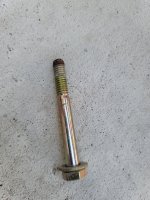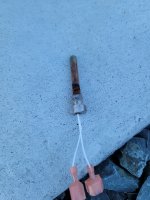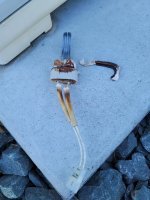Yes, I just observed this. I think before I was waiting until it said "Service Heater", and then looking into the Fenwal box - at that point the diagnostic Fenwal LED has gone out. If you watch the ignition real time, after the 3rd time lighting, the diagnostic LED inside the Fenwal box flashes 3 times, which according to the diagram on my Fenwal means "Ignition Lockout".
I pulled out my multimeter, put it to VDC, and tested for voltage across the FC+ and FC- pins before, during, and post ignition. It measures 0 VDC, so I believe that I have a flame sensing issue, so the Fenwal is going into Ignition Lockout.
I went down the grounding path as described in the article, and followed the instructions here to add another ground wire, but that has not helped: https://www.pentair.com/content/dam...ire_Kit_Installation_Instructions_English.pdf
Do I replace the Fenwal box, or is there something else I should be looking at? Where is the flame sensing wire? I don't have any signs of corroded wires or critters in my heaters, but I'd still like to trace that down to double check.
I pulled out my multimeter, put it to VDC, and tested for voltage across the FC+ and FC- pins before, during, and post ignition. It measures 0 VDC, so I believe that I have a flame sensing issue, so the Fenwal is going into Ignition Lockout.
I went down the grounding path as described in the article, and followed the instructions here to add another ground wire, but that has not helped: https://www.pentair.com/content/dam...ire_Kit_Installation_Instructions_English.pdf
Do I replace the Fenwal box, or is there something else I should be looking at? Where is the flame sensing wire? I don't have any signs of corroded wires or critters in my heaters, but I'd still like to trace that down to double check.




